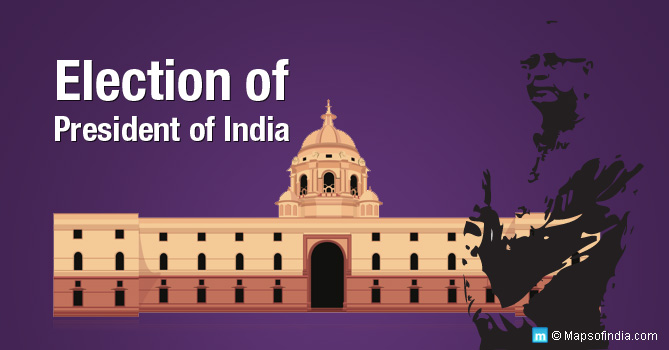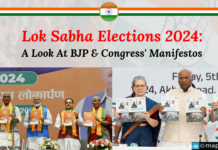The President of India holds the office of being the supreme commander of the Armed Forces and is the Head of the State. However, when compared to the Prime Minister, the President is merely de jure constitutional head of the country. While both hold executive powers, in practice, the Prime Minister with the help of the Council of Ministers exercises the powers, while the President, takes control only in case of an emergency. The emergencies have been clearly stated in the Constitution of India. In comparison, the President of the United States of America is both the Head of State and the Head of the Government, is responsible for the enforcement and execution of the laws of the Congress, and exercises all the executive powers.
While all eyes remain glued towards the United States of America, where the presidential elections are underway, let us take a look at the procedure of electing the President of India, which many of us might be unaware of.
Eligibility Criteria for President’s Office
The President of India before being elected has to fulfil the following conditions:
- He should be a citizen of India.
- he should be 35 years of age or above.
- He should be qualified to become a member of the Lok Sabha.
- He shall not be a member of either House of Parliament.
- He shall not be a member of a House of Legislature of any State.
- In case a member of either House of Parliament or of a House of Legislature of any State is elected as the President then he shall be deemed to have vacated his seat in that House on the date he assumes the office of the President of India.
- The President of India cannot hold any other office of profit.
Term of Office
- The President of India is elected for a term of five years from the date on which he enters his office.
- Under Articles 56-57 of the Constitution of India, the President is eligible for re-election.
- The term of office of the President may be cut short if he resigns (In writing addressed to the Vice President) or is removed by the process of impeachment on charges of violation of the Constitution of India.
Election of President
Nomination
The first step towards the election of a President is the nomination of the candidates, which takes place in the following manner:
- The candidate must be subscribed by at least 50 electors as proposers and 50 electors as seconders;
- Each voter can propose or second only one candidate;
- The candidates have to make a security deposit of Rs 15000 in the RBI, which is forfeited in case the candidate fails to secure 1/6th of the votes cast.
The Eligible Voters
Well, how is a class leader elected? Generally, when the candidates are just 2 or 3, it is by show of hands by the other students of the class, or sometimes through paper votes to find the most popular candidate. The election of the President of India is also very similar but on a much larger scale.
Article 54 of the constitution requires the President to be elected by an electoral college. The Electoral College consists of:
- The elected members of the Rajya Sabha as well as the Lok Sabha;
- The elected members of the Legislative Assemblies of the States;
- Vide the Constitution 70th amendment Act, 1992, the National Capital Territory of Delhi and Union Territory of Pondicherry are also included in the electoral college.
The aforesaid members of the electoral college are representatives of the citizens of India. Thus, while the citizens are not directly involved in the election of a president like that of a class leader, they do indirectly select the President while voting for the candidate of their choice in the Legislative Assembly.
The Procedure
India follows the system of Proportional Representation by means of Single Transferable Vote Method/System in the election of the President. Proportional representation is characterized by the fact that an electorate is directly proportional to the elected body. Thus, if a certain number supports a particular party, then the party will receive the same number of votes. The Single Transferable Vote System follows the procedure of transferring the votes of the losing candidate to other candidates still in the race, minimizing the wastage of votes.
The procedure in allocating the number of votes is as follows:
- Depending on the size of the state represented, the MLA of a state is given a certain number of votes. The number of authorised votes is arrived at by the following method:
The total population of the state, based on the 1971 population census, is divided by the number of elected members of LA, and then further divided by 1000. In case the number arrived at is higher than 500, then each member is allocated an extra vote.
- The elected members of the Lok Sabha and the Rajya Sabha are allocated votes in the following manner:
The total value of votes of all the States, based on the 1971 population census, is divided by the total number of elected members of Parliament.
The Secret Ballot
The voting is conducted by a secret ballot and the ballot paper contains two columns. The first constitutes the name of the candidates and the second is blank, where the voters indicate the order of preference. Like in all other election procedures, the votes are then counted and the candidate with the 50%+1 is elected as the President of India. However, in case there is no clear winner, the following procedure is followed:
- The counting begins again on the basis of elimination and exclusion;
- Exclusion is done, wherein the candidate with the lowest number of votes is excluded, and his votes distributed equally amongst the others;
- This procedure of exclusion is followed till a clear winner at 50%+1 is arrived at.
The secret ballot conducted does not come under the anti-defection law and thus the voters can vote according to their conscience rather than the preferences of the party that they represent.
Emergency
In case the President of India is taken ill or is no more, the vice-president steps in to take over the duties until subsequent election. As per the Constitution of India, the country cannot be without a President even for a single day. In those rare circumstances, where both the President as well as the vice-president are unavailable, the Chief Justice of India takes over until subsequent election. Such a circumstance arose just once in 1969, when Mr M Hidayatullah, the Chief Justice of India took over as the President for a month.
Read More
Presidential Election 2017 India
List of Presidents in India




